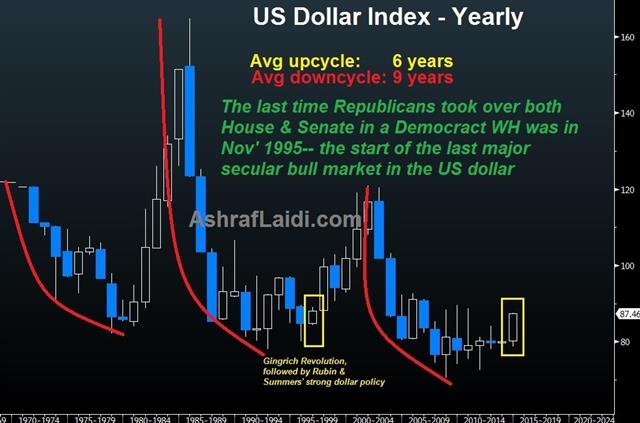NFP good enough for dollar uptrend
Any disappointment from the lower-than-expected October release of 214,000 in US payrolls has been offset by further declines in the unemployment rate, reaching fresh six-year lows at 5.8%. The uptick in labour participation to 62.8% from 62.7%, and the fall in the in the underemployment rate to 11.5% from 11.8%, helps alleviate concerns that the declining jobless rate was caused by lower participation in the labour force.
The 31,000 increase in the prior two month's revisions is also a positive. The figures support the Fed's exit from the five-year quantitative easing programme, highlighting contrasting monetary policy between the US on one side, and Japan and Eurozone on another, further supporting the US dollar.
The weaker-than-expected headline NFP has been largely attributed to material seasonal adjustments, seen as the biggest in 30 years. Yet, continued additions in manufacturing, shown by the 15th consecutive monthly increase (longest since 1996-97) and additions in construction, maintain the notion of an improved bricks-and-mortar economy.
Average hourly earnings were weaker than expected but inched up 0.1% m/m from flat, while the y/y series rose 2.0% as in the previous month.
USD rally intact
Although the US dollar appeared to have peaked out at the top of an 18-month channel against the Japanese yen at 115.59, the trend remains largely positive, paving the way for a retest of 115.50s, followed by our target of 117.30s.
We reiterate that the current USD rally shows characteristics not seen since 2005, as it is accompanied by advances against the Japanese yen, which is unlike any of the USDX advances of the past six years when the greenback mainly reflected debt and austerity woes in continental Europe and the UK. Aside from domestic strength in the US, as well as the windfall of falling oil prices on the US economy, the striking contrast of policy divergence between the Fed and the three other major central banks (ECB, BoJ and BoE) will keep the greenback standing tall.
Outside the US, the factors aiding the USD are more than enough; the UK's political uncertainty ahead of the May elections and the lingering risk of a “No” result from any in/out EU referendum; Japan's planned rebalancing of pension portfolios to include more foreign stocks; the Eurozone's dependence on a weak euro to fight off the threat of disinflation, regardless of how many ABS and covered bonds the ECB buys; and Switzerland's on-going threat to enter negative interest rates, so long as EUR/CHF is under pressure. These are all the factors for the Fed to consider when removing the punch from the party.








